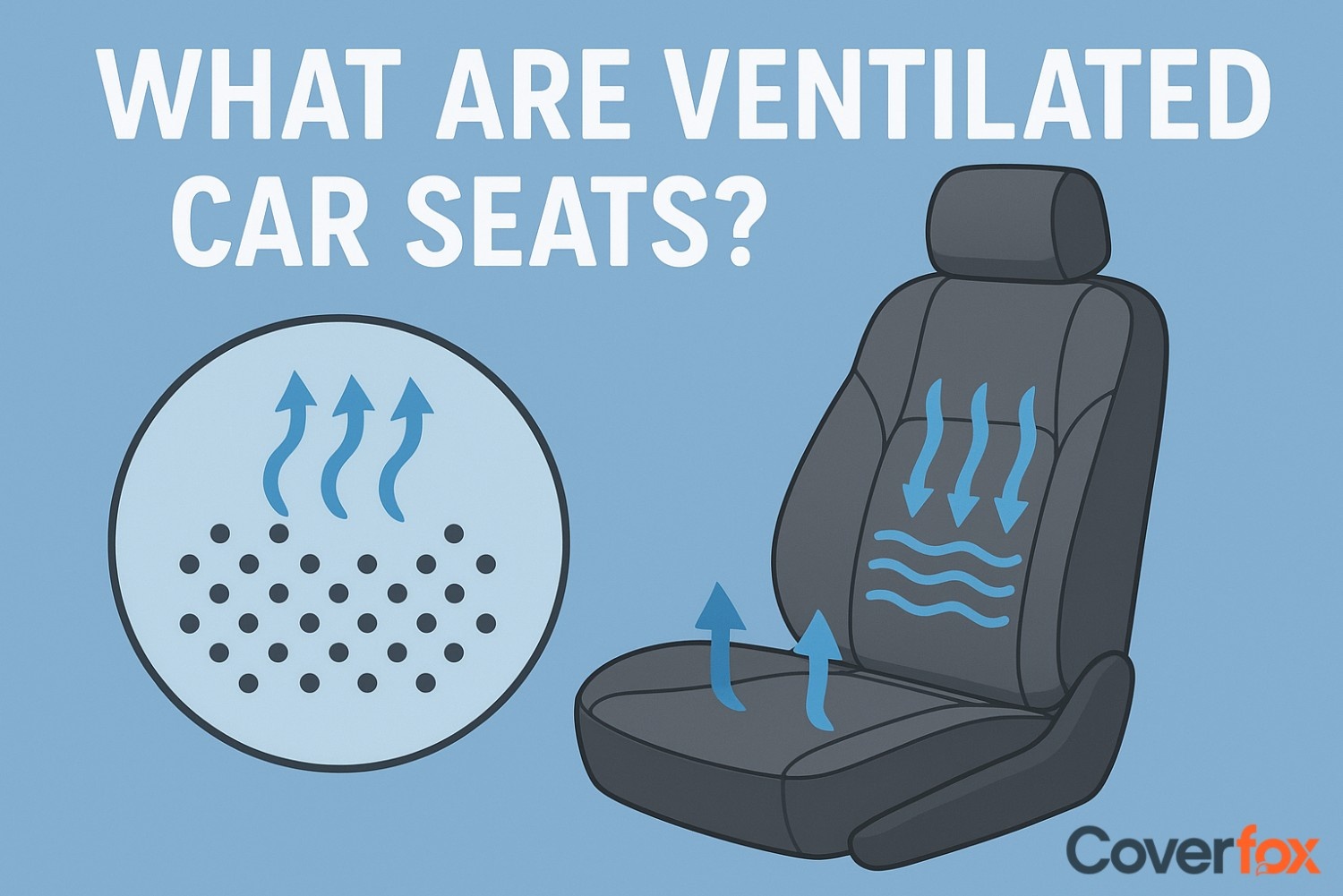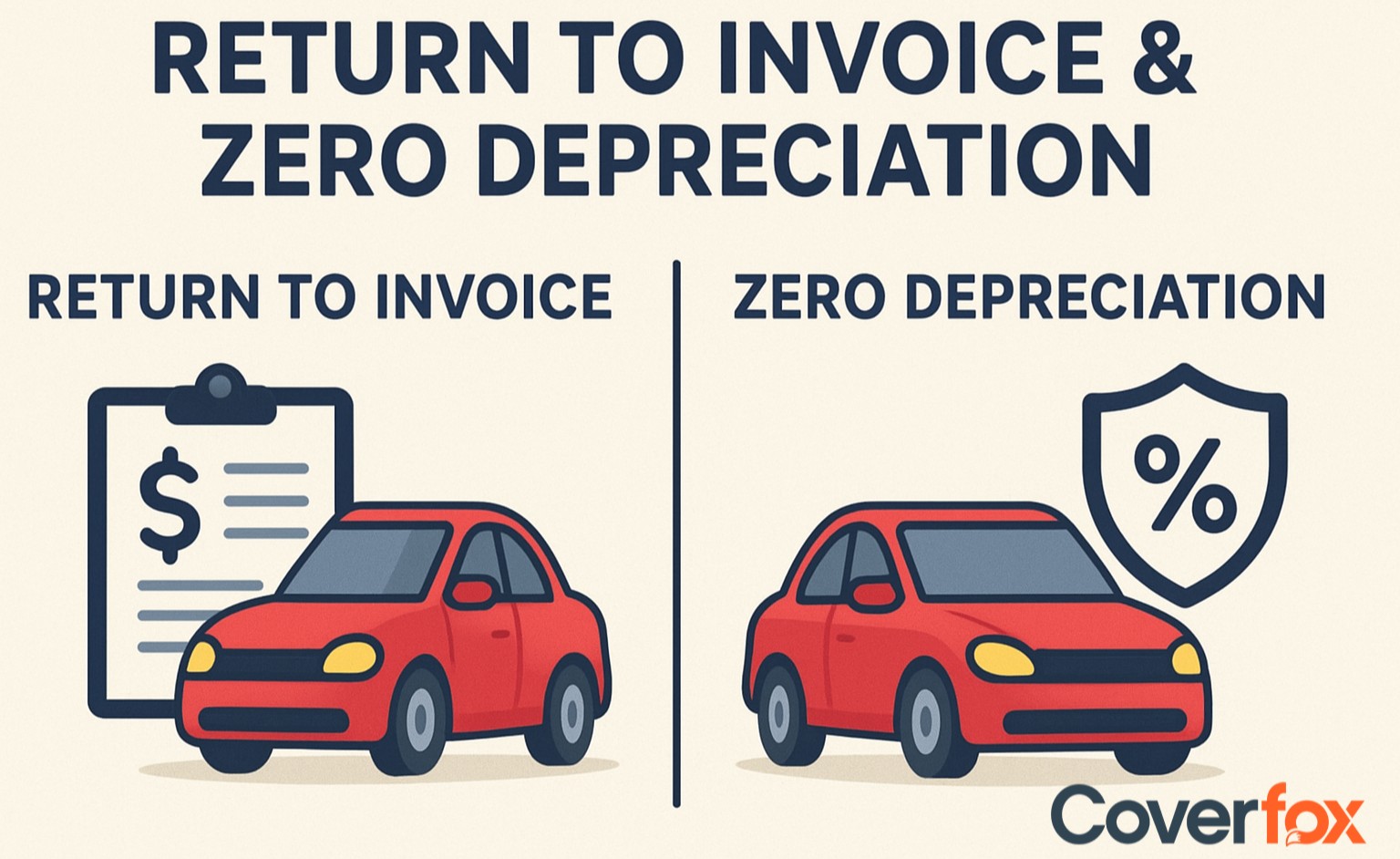Ventilated seats in cars use built-in fans and perforated upholstery to circulate air and keep occupants cool, especially during hot or humid weather. They help reduce sweating, improve long-distance comfort, and enhance the overall cabin experience. By regulating seat temperature through constant airflow, they offer a premium comfort upgrade that benefits daily commuters and long-drive travellers alike.

While we talk about car interiors, the first thing that comes to mind is the car seats. From the upholstery to multi-feature pack seats, each amplifies the comfort of travelling, and when it comes to comfort, spending a little more time and money on seats will go a long way in making your journey a relaxed one. One such feature of the seats is the ventilated seats. To understand more about these types of seats, what they mean, and how they work, read along.
What are Ventilated Seats in a Car?
Ventilated seats in a car are specially designed seats that use built-in fans to circulate air through tiny perforations in the seat surface, keeping the occupant cool and comfortable. They help reduce sweating, minimise heat buildup during long drives, and offer better comfort in hot climates. This feature enhances the overall driving experience by maintaining a pleasant seating temperature regardless of weather conditions.
How Does the Seat Ventilation Work?
Seat ventilation works by pulling air through perforations in the seat using built-in fans or cooling channels. Here is a detailed breakdown:
Air Intake Fans
Air Circulation Channels
Perforated Upholstery
Moisture & Heat Reduction
Small electric fans inside the seat draw in cabin air.
The air is pushed through internal ducts within the seat cushion and backrest.
Air flows out through tiny holes in the seat material to keep the occupant cool.
Increased airflow helps minimise sweating and lowers seat surface temperature.
How Useful Are Ventilated Seats in a Car?
In countries like India, where humidity and hot temperatures are at their peak, having ventilated seats in a car is a huge plus point towards comfort, because:
1. Prevents Sweating
Constant airflow reduces heat buildup and prevents the seat from becoming sticky or uncomfortable.
2. Improves Long-Drive Comfort
Keeps you cool over extended journeys, reducing fatigue.
3. Enhances Cabin Experience
Helps maintain a pleasant seating temperature even when the cabin AC takes time to cool.
4. Supports Better Posture
Cooler seats prevent discomfort and fidgeting, helping the driver maintain proper driving posture.
Types of Ventilated Seats in Cars
Here are the common types of ventilated seats found in modern cars:
Fan-Based Ventilated Seats
Blower-Based Ventilated Seats
Cooled (Air-Conditioned) Seats
Hybrid Ventilated Seats
Use small electric fans inside the seat to pull in cabin air and circulate it through the seat perforations.
Employ more powerful blowers for stronger airflow, ideal for hotter climates and premium vehicles.
Use chilled air from the car’s AC system to deliver cooler air through the seat, offering maximum comfort.
Combine fans with cooling elements to provide both steady airflow and temperature-controlled cooling.
Ventilated Seats vs Cooled Seats vs Heated Seats: Differences
These three seat technologies enhance comfort but differ in how they regulate temperature, where they work best, and how much energy they use.
| Feature | Ventilated Seats | Cooled Seats | Heated Seats |
|---|---|---|---|
| How They Work | Circulate ambient cabin air through perforations in the seat | Use ventilation + cooling elements to actively chill the air | Use electric heating coils to warm the seat surface |
| Temperature Effect | Reduces sweating and maintains airflow | Provides noticeable cooling sensation | Provides direct, warm comfort |
| Ideal Climate | Hot and humid regions | Very hot climates where extra cooling is needed | Cold or winter climates |
| Energy Consumption | Low to moderate | Moderate to high | Low |
| Air Source | Cabin air only | Cooled, conditioned air | Internal heating elements |
How to Check if the Seats are Ventilated?
You can confirm whether your car has ventilated seats by looking for specific controls and physical indicators like:
- Look for a dedicated seat-ventilation button on the centre console or touchscreen, usually showing a fan icon over a seat.
- Check the seat surface for tiny perforated holes, which allow air to pass through.
- Listen for a faint fan sound when the feature is turned on, indicating airflow from the seat.
- Feel for airflow through the seat base and backrest when the system is activated.
Pros and Cons of Ventilated Seats in Cars
The advantages and drawbacks of ventilated seats help you understand how useful they are in real-world driving.
Pros:
- Keeps you cool by reducing sweat and heat buildup during long drives.
- Improves comfort in hot climates, especially during summer traffic.
- Enhances cabin luxury and adds a premium feel.
- Helps prevent back discomfort caused by trapped heat.
Cons:
- Usually available only in higher variants or premium cars.
- Slightly increases power usage when turned on.
- The cooling effect can feel mild compared to full air-conditioning.
- Requires regular cleaning to prevent dust from clogging the seat perforations.
Ventilated Seats – is it worth the investment?
Ventilated seats are worth the investment if you live in a hot region, travel long distances, or prefer leather upholstery, as they significantly improve comfort and reduce sweat. The added cost is justified for daily commuters and business travellers, though availability may be limited to higher trims.
Which Popular Indian Car Models Feature Ventilated Seats?
Many modern cars in India now offer ventilated seats, either as standard or as part of higher variants and customisation options.
Popular Models with Ventilated Seats:
- Hyundai Creta
- Hyundai Verna
- Hyundai Alcazar
- Kia Seltos
- Kia Sonet
- Kia Carens
- Tata Nexon (top variants)
- Tata Harrier (new-gen models)
- Tata Safari (new-gen models)
- Skoda Slavia
- Skoda Kushaq
- Volkswagen Virtus
- Volkswagen Taigun
- MG Astor
- MG Hector
- Maruti Suzuki XL6
- Maruti Suzuki Baleno (some variants)
- Toyota Hyryder
- Mahindra XUV700
- Mahindra XUV300 (selected trims)
Bottom Line
Ventilated seats in a car are like add-ons to car insurance; they enhance your comfort level at an additional cost, just as add-ons enhance your protection at a minimal fee. These ventilated seats ensure your long commutes are sweat-free and relaxed. If you are living in a humid area, consider having this customisation to make your travels a lot easier inside the car.
Explore More Articles:
Leather Car Seats vs. Fabric Car Seats: Choosing the Right Interior for Your Car
How to Choose the Best Car Safety Seat for Your Child
Importance of Car Airbags in Vehicle Safety Systems
Frequently Asked Questions
What exactly are ventilated seats?
Ventilated seats are car seats with built-in fans that circulate air through tiny perforations to keep the seat surface cool and breathable.
Do ventilated seats actually cool the seat?
Yes, ventilated seats move air through the seat to reduce heat and sweat, providing a noticeably cooler seating experience.
Do ventilated seats use more fuel?
No, ventilated seats do not affect fuel consumption because they run on the car’s electrical system, not the engine.
Do ventilated seats use a lot of power?
No, ventilated seats use minimal electrical power, comparable to running a small cabin fan.
Can ventilated seats be added aftermarket?
Yes, they can be added aftermarket, but quality varies, and improper installation can affect comfort and warranty.
Do ventilated seats work with fabric upholstery?
They work best with perforated leather or leatherette, as fabric restricts airflow and reduces the cooling effect.
Which is better, cooled or ventilated seats?
Cooled seats provide stronger cooling using air-chilled systems, while ventilated seats offer gentle airflow; which one is better depends on climate and preference.
Are ventilated seats available in the rear seats?
Rear ventilated seats are available in a few premium cars but are uncommon in mass-market models.
Are ventilated seats only for luxury cars?
No, many mid-range cars in India now offer ventilated seats, especially in top variants designed for hot-weather comfort.





